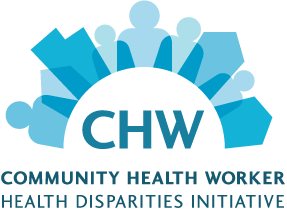Project Addresses Heart Health Disparities in Two Filipino American Communities
Filipino Americans in the United States make up the second-largest Asian American and Pacific Islander group in the nation.1 According to data from the U.S. Department of Health and Human Services and Kalihi-Palama Health Center (KPHC):
- Roughly two-thirds of Filipino Americans living in the United States were born outside the United States, and English is a second language for nearly 40 percent of them.2
- Nearly one in three Filipino Americans dies of heart disease, making it the leading cause of death in this group.2
- Heart disease and stroke combined cause 60 percent of all deaths in Filipino Americans.2
- One in four Filipino Americans has high blood pressure, a rate higher than in any other group of Asian Americans or Pacific Islanders. High blood pressure is controlled in only 8 percent of these individuals.2
In 2008, the Kalihi-Palama Health Center (KPHC) and the Kokua Kalihi Valley Comprehensive Family Services (KKV), both Health Resources and Services Administrationâ??funded community health centers in Honolulu, Hawaii, began as pilot sites for the Healthy Heart, Healthy Family (HHHF) manual for Filipino Americans. Under these two community-based projects, the NHLBI worked with health professionals to implement training, health education, and clinical and lifestyle management activities.
Implementation Strategies
Both KKV and KPHC have deep roots in the Honolulu community, and both sites serve many Filipino Americans in the area. For example, 54 percent of Kalihi Valley residents are Filipino American, and they make up 30 percent of KKV community health center users.
In preparation for the program, KKV and KPHC:
- Sent staff members to train-the-trainer sessions in Washington, DC.
- Established partnerships and collaborations for implementation by reaching out to Filipino American community churches and groups.
- Developed eligibility criteria for participants.
- Released advance publicity about the HHHF sessions in newsletters, flyers, direct invitation from physicians and community outreach as part of their recruitment efforts.
The KPHC and KKV HHHF interventions had three phases. During the first phase, 38 participants (of whom 75 percent were health professionals) completed the train-the-trainer program at KPHC. Of the participants, 42 percent spoke at least one Filipino dialect. At KKV, 11 Filipino American staff members completed the training.
The second phase consisted of HHHF sessions for the community. The KPHC sessions took place at three locations: the Honolulu Cosmopolitan Church, the Kaumakapili Church, and KPHC; almost 200 people attended. Of the 115 Filipino American community members who signed the consent form for the KKV intervention, 99 attended one or more training education sessions. All participants had at least one known risk factor for heart disease.
In the third phase (clinical and lifestyle management), the programs conducted biometric measurements, including measuring weight, waist circumference, blood pressure, cholesterol, blood glucose, and insulin levels. KKV collected these measurements at program entry (baseline), 6 months, and 12 months; KPHC collected measurements at baseline, 3 months, and 6 months.
Key Results/Outcomes
These interventions had three types of outcomes:
- Increased knowledge about risks to heart health and what to do about these risks.
- Positive changes in lifestyle and behaviors pertinent to heart health.
- Positive clinical outcomes, including improvements in blood pressure, blood cholesterol, blood glucose, body mass index, weight, and waist circumference.
KPHC reported that its intervention classes increased the number of trained CHWs and the number of community members with more knowledge of their cardiovascular risk factors and of heart healthy behaviors to reduce these risks. The interventions also resulted in many referrals to health professionals. KKV reported significantly improvements in knowledge about heart health among community members. Of the 99 participants in its program, 78 attended at least five sessions; 41 had perfect attendance and received a certificate of completion and a gift card to a local pharmacy. Changed behaviors were evidence that the interventions paid off as well. KPHC reported that whole families and large church groups had made substantial changes in their diets and physical activity habits.
KKV participants showed small improvements on three of the clinical measures from baseline to 12 months. All results were statistically significant
- Mean total cholesterol decreased from 186.0 mg/dL to 170.8 mg/dL.
- Mean low-density lipoprotein decreased from 114.4 mg/dL to 103.0 mg/dL.
- Mean fasting blood glucose decreased from 117.9 mg/dL to 109.0 mg/dL.
Success Factors
- Members of the Filipino American community in Honolulu trusted and knew both KPHC and KKV well.
- The HHHF manual is sensitive to the needs and culture of the people it is intended to serve.
- The interventions leveraged resources by partnering with churches and community groups.
- Both community health centers started the HHHF program by sending staff to NHLBI-sponsored train-the-trainer sessions. These new trainers then used their skills and knowledge of the Filipino culture and language to train others.
- KPHC and KKV used health professionals paired with community health worker teams to teach the community participants. These teams could respond to technical questions on the spot while putting the information into a context that the community members could understand.
- Both KPHC and KKV built activities around family and church groups, a particularly effective strategy for reaching Filipino Americans.
1 Barnes, J. S. & Bennett, C. E. (2002). The Asian population: 2000 (Commerce Publication No. C2KBR/01-16). Washington, DC: U.S. Department of Commerce.
2 Kalihi-Palama Health Center. 2009. HHHF Project Terminal Report to the NHLBI (unpublished data).
Last Updated: June 2014






